Car
Formula 2 2025: how does an F2 front wing work?
by Samarth Kanal
6min read
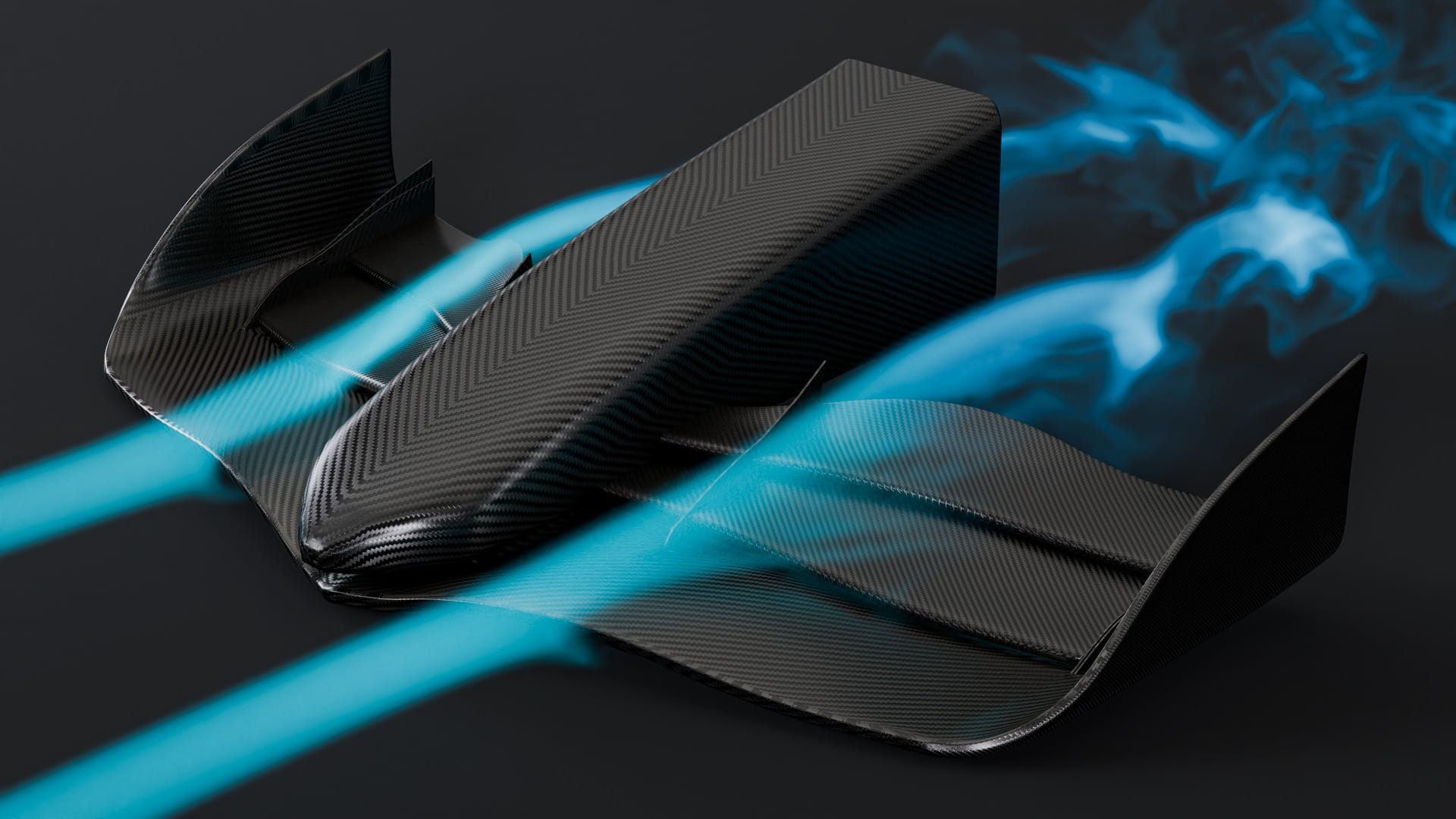
The latest generation of the Formula 2 car was introduced in 2024 and since then teams have had plenty of time to understand its aerodynamics and behaviour. Our guide explains how a front wing works and why the F2 front wing is specifically designed this way.
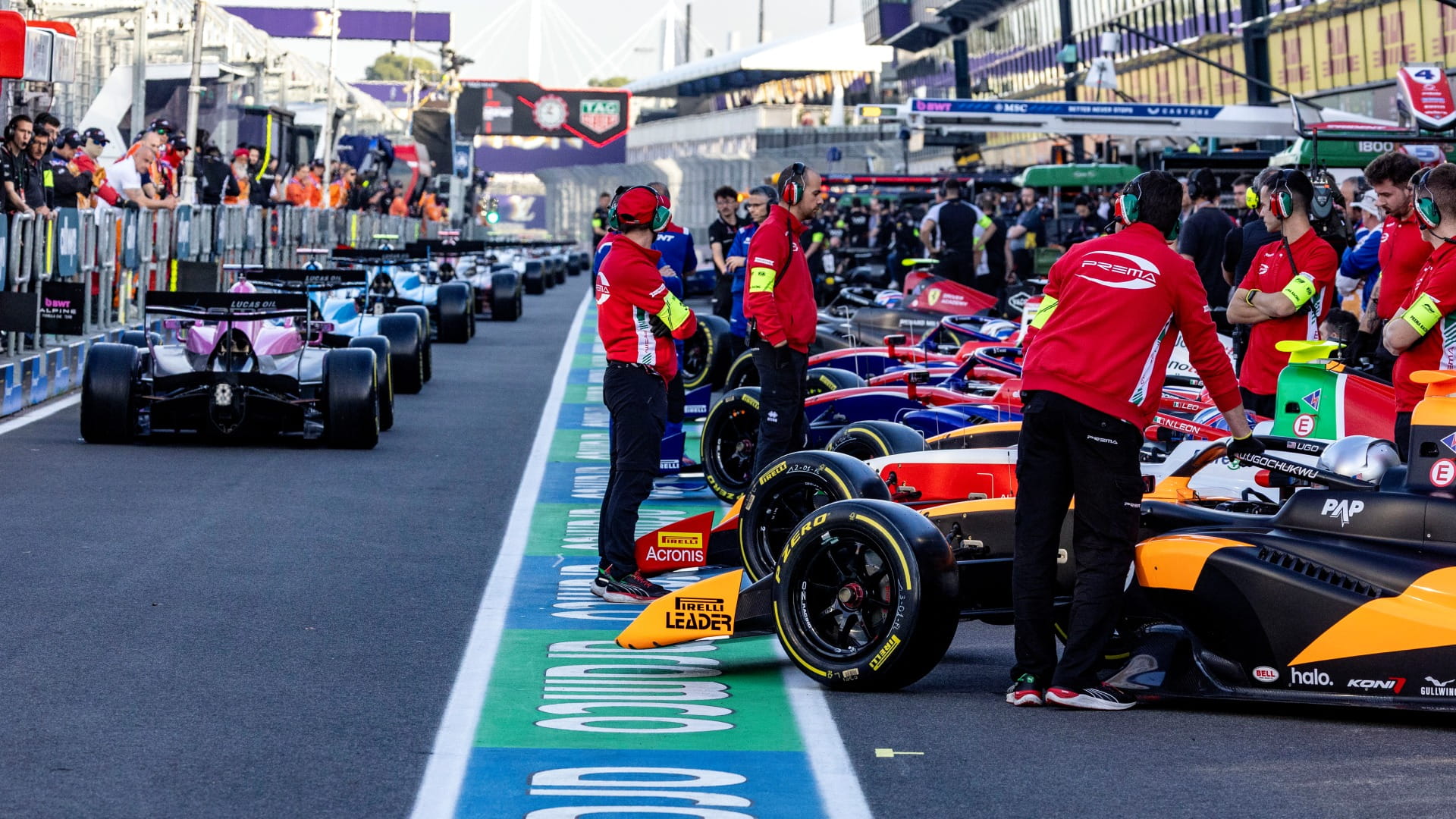
Event, Innovation, Car
How are all 52 Formula 2 and Formula 3 cars shipped around the world?
The front wing is the first part of a single-seater racing car that meets the air, which makes this aerodynamic device crucial to producing downforce locally and downstream.
In F2, the front wing is composed of a large mainplane - its lowest plane - and two adjustable outboard flaps that produce downforce and direct airflow over the suspension and into the two airboxes that flank the engine.
Some of that air is also channelled above the car over the engine cover, around the sidepods themselves, and over the sides of the floor - which means the angle of those flaps is key to shaping flow downstream and ultimately shaping the behaviour of the car.
.jpg?cx=0.5&cy=0.5)
The AIX car of Cian Shields during the second Formula 2 sprint race of the 2025 season, in Bahrain
How does a front wing produce downforce?
Motorsport wings act like aircraft wings - but upside down. Therefore, instead of lift, they produce downforce - a force that acts vertically on the car and pushes it down towards the track, giving drivers grip to corner at faster speeds.
Downforce is generated when there is an area of high-pressure airflow above a surface and low-pressure airflow below the surface. The airfoils on a single-seater car’s wing are therefore mounted to do exactly that.
Downforce increases with the square of speed so it is dependent on the velocity of the car. However, when there’s a difference between air and the car, drag is also generated. This acts horizontally against the car. Drag does not scale linearly with downforce so an efficient wing can produce more downforce than it does drag, as is the case in most single-seater racing cars.
F2 cars do produce significant drag, which means that when a driver comes off the accelerator the car will still slow down considerably without use of the brakes. F2 cars can overcome this drag thanks to their V6 engines that produce up to 620 horsepower.
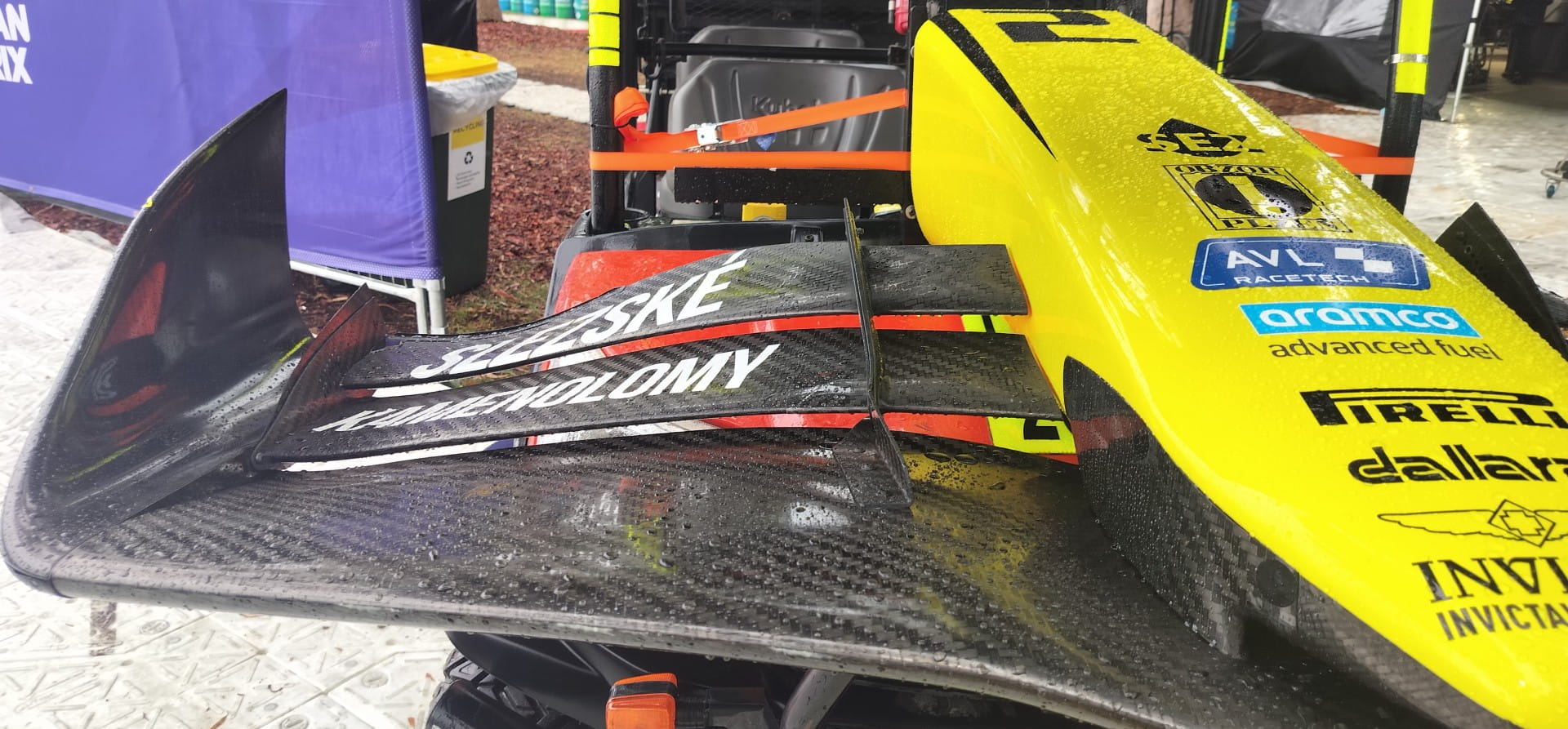
A close-up look at an F2 front wing
What is ‘angle of incidence’ and why is it important?
Angle of incidence or angle of attack is a term that refers to the angle between the chord line of a wing and the relative direction of airflow.
The chord line is a straight line between the front tip (leading edge) and rear edge (trailing edge) of an airfoil.
An increased angle of incidence produces more downforce locally (and more drag) but, if the angle of attack is too high, airflow will ‘stall’ - it will separate from the airfoil - and the airfoil will suddenly stop generating downforce.
This is known as the critical angle, and it can occur when the angle of the airfoil is around 15 to 20 degrees.
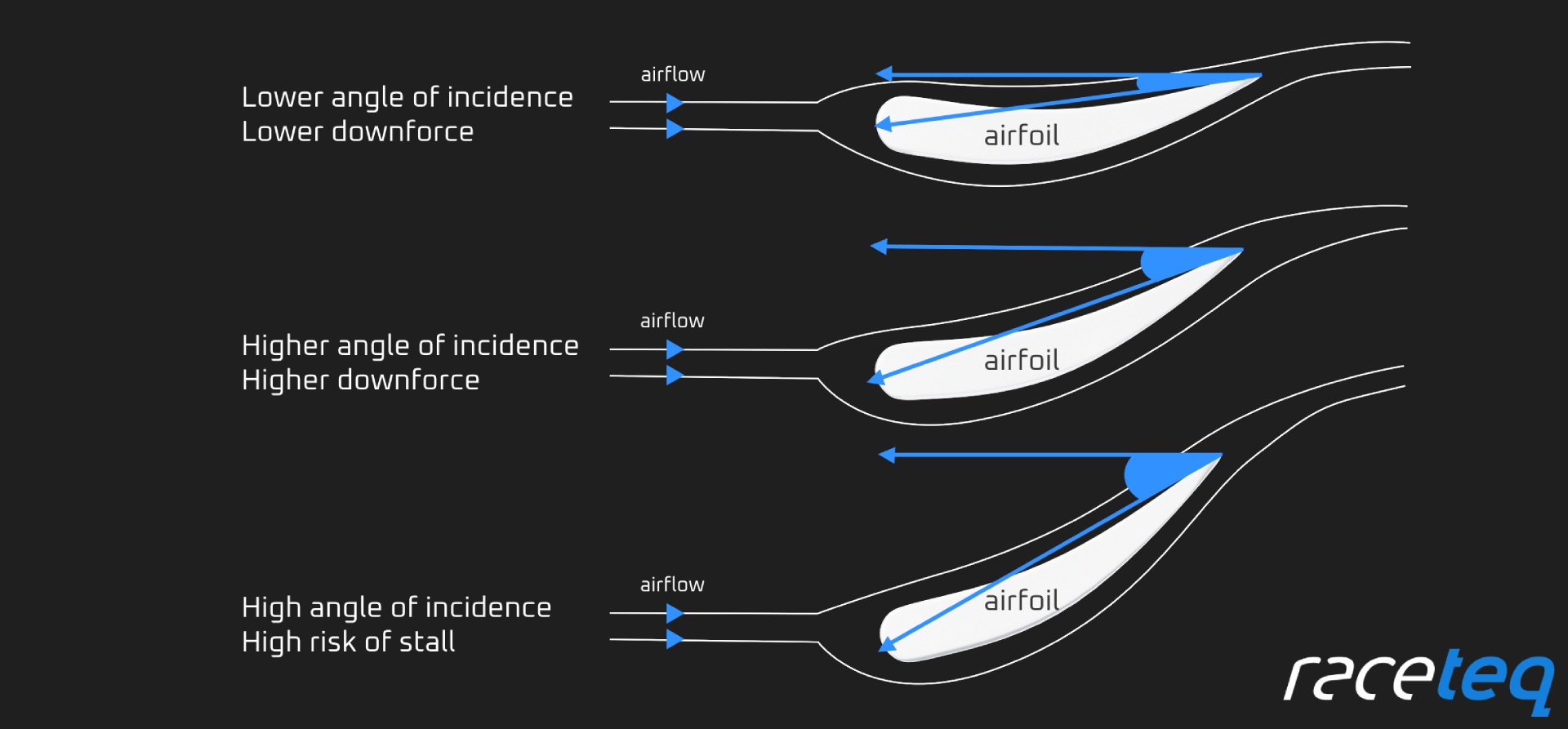
A diagram explaining the relationship between angle of incidence and downforce, and the critical angle
What differentiates the F2 wing?
The F2 wing is composed of a large mainplane at its very bottom and then two big adjustable flaps. Inboard of those there are two smaller flaps that are not adjustable and separated from the larger flaps.
At circuits where there are lots of straight-line sections, teams may opt to fit the F2 low-downforce front wing that includes just one flap. They may complement this with the low-downforce rear wing that has a smaller main flap.
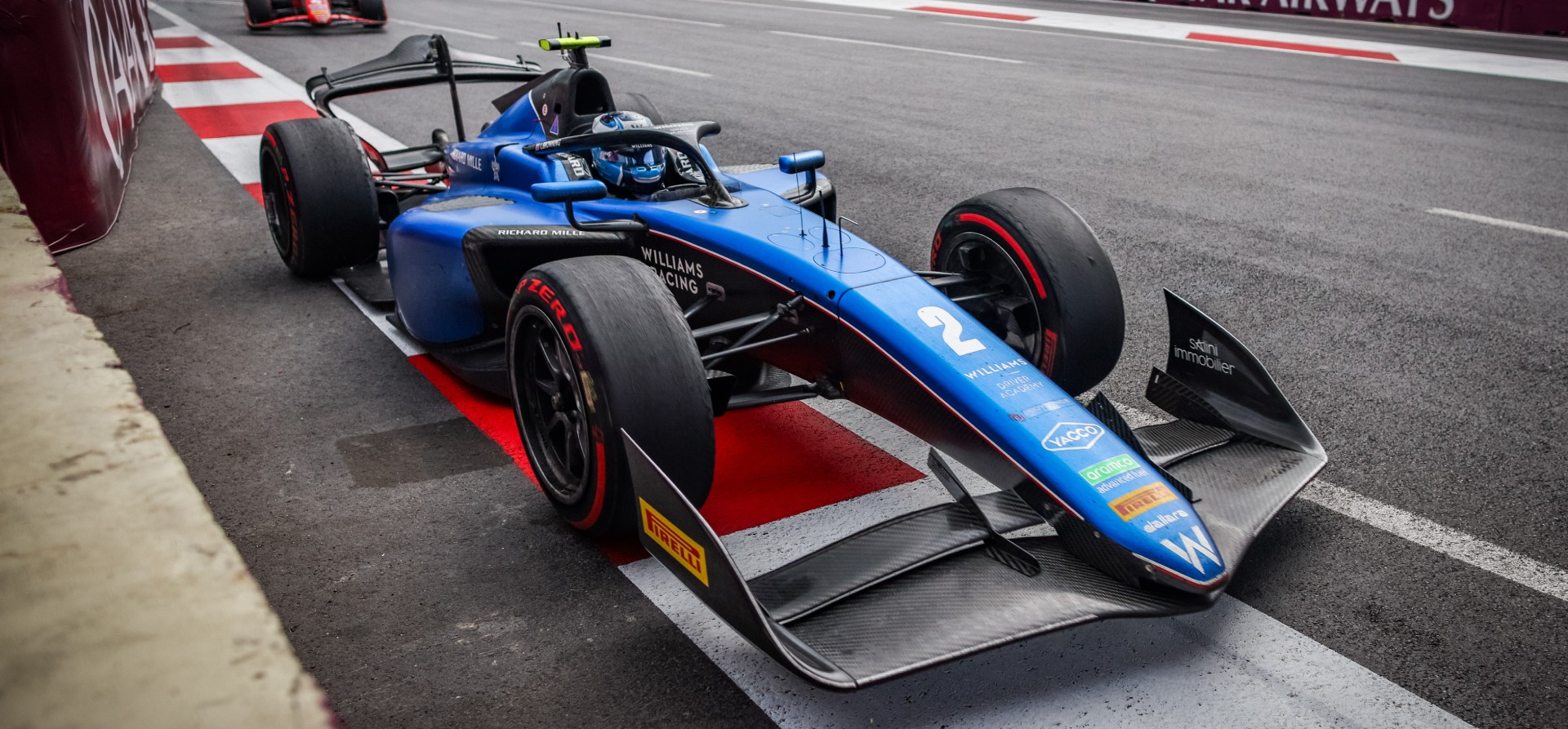
The low-downforce F2 package with a tapered rear wing and a front wing with just one flap
The flaps are separated by the nose, which means that the F2 wing - as with all modern single-seater wings - is one singular piece that can be replaced easily in terms of damage.
The nose is hollow and acts as a crash structure in the event of an impact, and it is mounted to the body with four strong bolts.
.jpg?cx=0.5&cy=0.5)
An illustration annotating every part of the post-2024 Formula 2 car’s front wing
Teams can adjust the inboard front wing flaps using the outboard and inboard adjusters that can be loosened and then tighten with a bolt, which can be applied to one of 21 holes. This impacts the angle of the flap and the downforce it will generate.
At a circuit with numerous low-speed corners and a high-downforce demand such as Monaco, teams aim to increase the angle of attack to its highest point; at a high-speed circuit with few corners and longer straights such as Monza teams will opt for lower angles to reduce drag and optimise top speed and acceleration.

An illustration giving us a close-up look at the inboard adjuster of an F2 front wing
The front wing also includes a significant gap between the nose and mainplane, known as a slot gap.
The slot gap channels airflow under the flat nose and through the underfloor of the car, increasing downforce by creating a larger zone of low-pressure airflow below it.
Significantly, there is a gap between the flaps and the endplates, which themselves are quite large. This gap serves to direct airflow inwards while the large endplates direct airflow inwards and direct vortices away from the car.
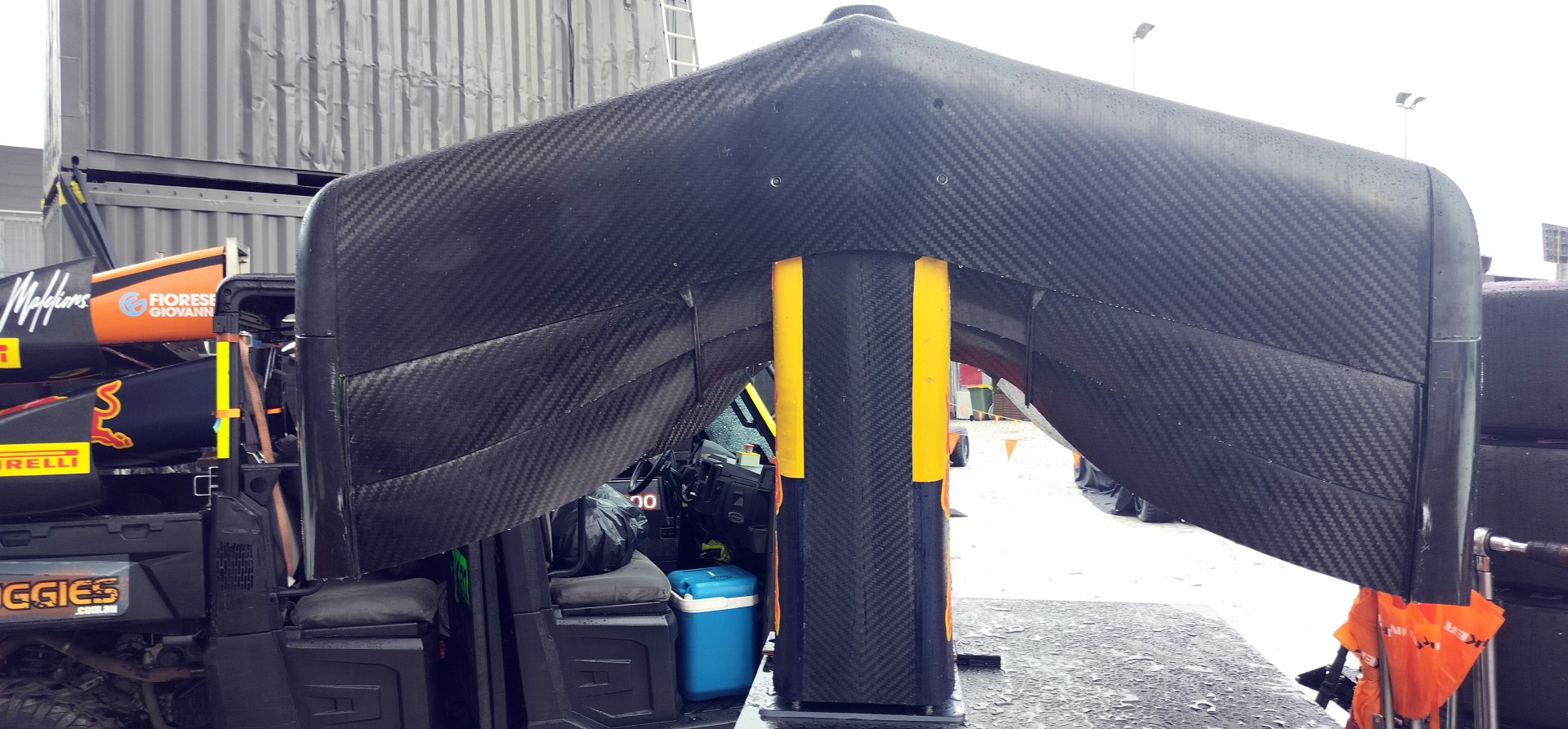
The flat underside of an F2 car front wing
What are vortices?
Vortices are residual and high-energy spiralling patterns of rotating airflow left by wingtips - and are more clearly spotted when left behind by aircraft wings as air condenses to liquid form at high altitude.
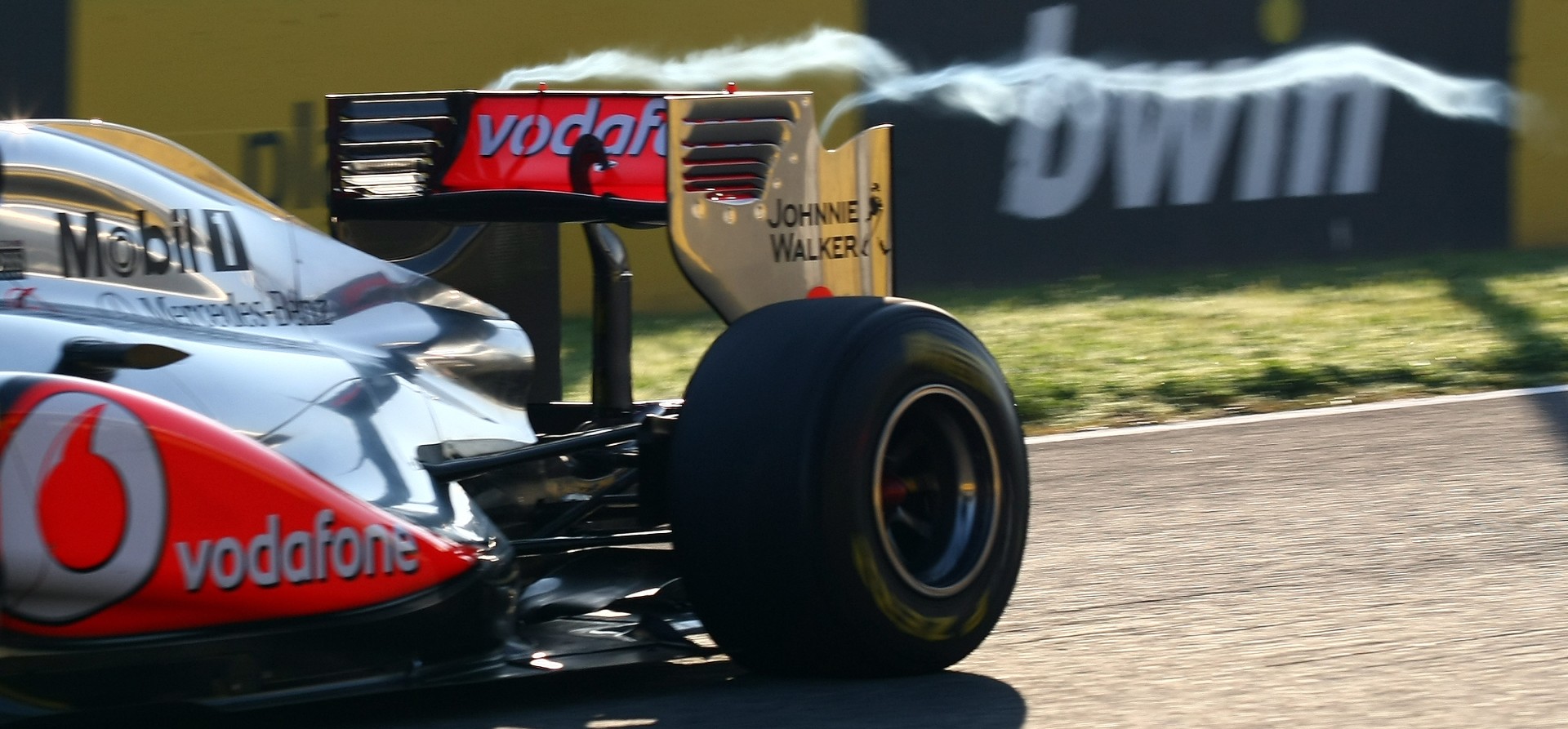
Vortices coming off Lewis Hamilton’s 2011 McLaren Formula 1 car
They occur because at the trailing edge of a wing, air is transitioning from a high-pressure zone to a low-pressure zone and, at this point, the pressure is equal. It causes air to spiral off the tips of a wing.
Vortices are therefore a side-effect of drag or lift and they can cause more drag directly behind the trailing edge of the wing. They can also cause turbulent airflow that disrupts the following car through corners.
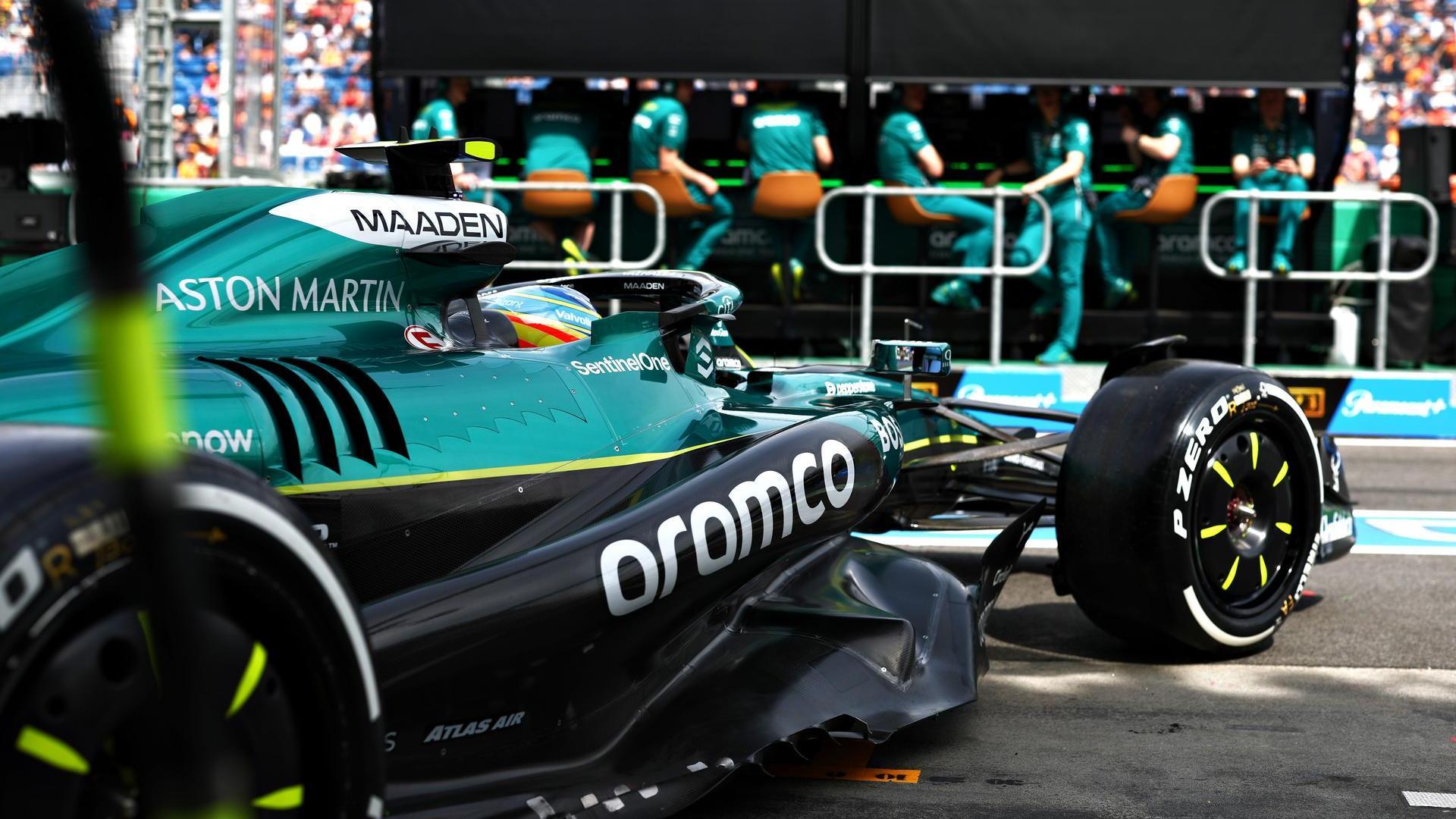
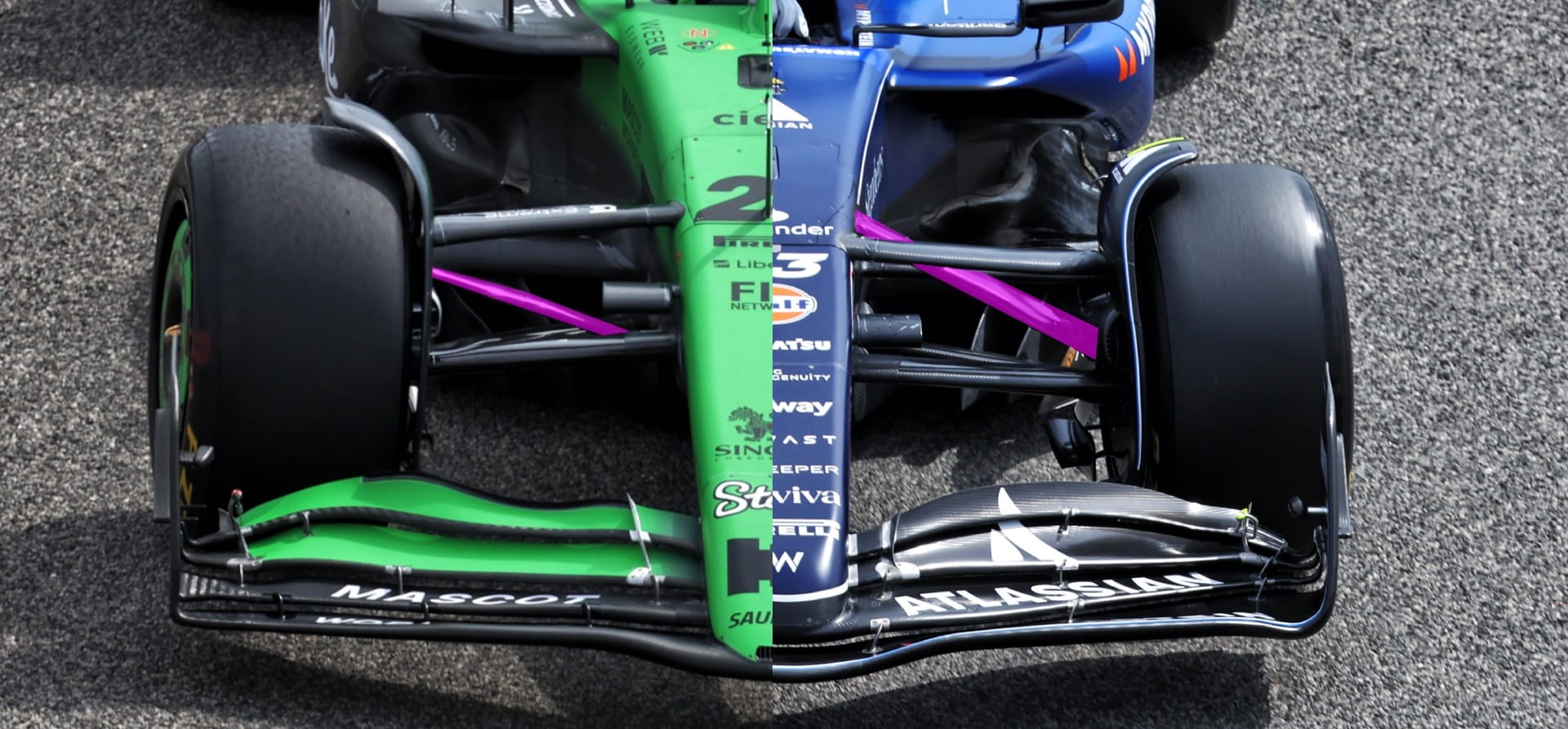
.jpg?cx=0.5&cy=0.5)
.jpg?cx=0.5&cy=0.5)
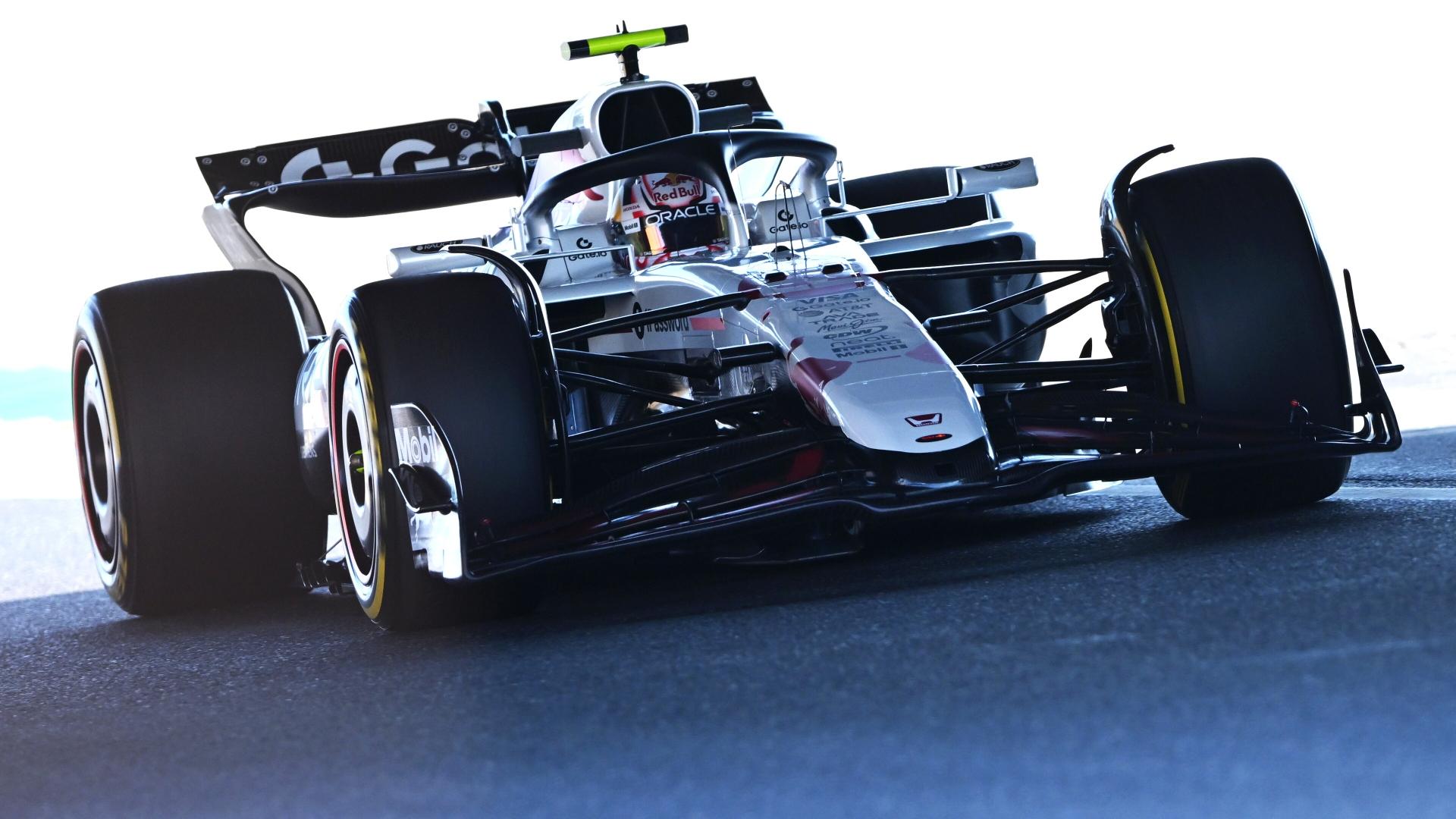
.jpg?cx=0.5&cy=0.5)